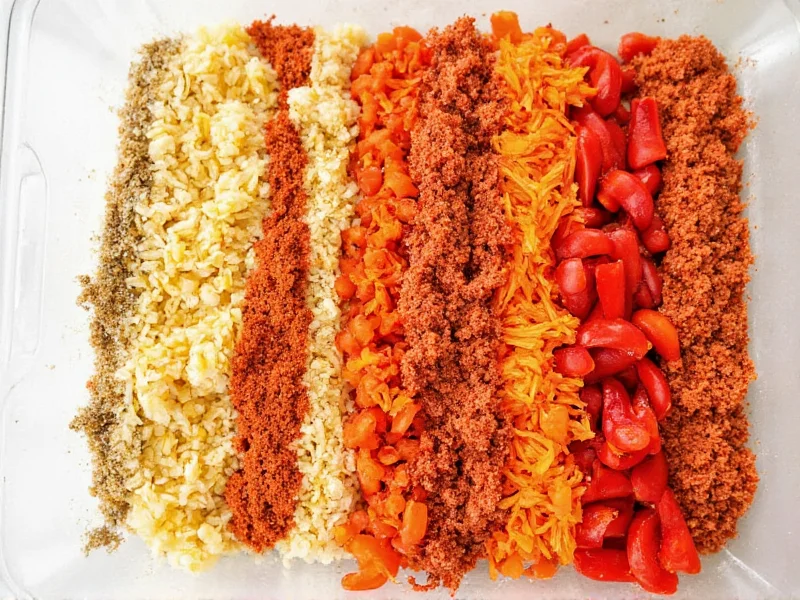Understanding how spiciness is measured unlocks the science behind your favorite hot sauces and peppers. The burning sensation you feel isn't just subjective—it's quantifiable through precise scientific methods that have evolved significantly since their inception. Whether you're a culinary enthusiast, food manufacturer, or simply curious about that jalapeño's kick, knowing how spiciness is measured helps you navigate the world of heat with confidence.
The Chemistry of Heat: Capsaicin Explained
At the heart of spiciness measurement lies capsaicin, the primary capsaicinoid compound found in chili peppers. When you eat something spicy, capsaicin binds to TRPV1 receptors in your mouth and throat, triggering a neurological response that your brain interprets as heat or burning. The concentration of capsaicin and related compounds directly determines how spicy a food will taste.
Wilbur Scoville's Revolutionary Test
In 1912, chemist Wilbur Scoville developed the first standardized method for measuring spiciness, now known as the Scoville Organoleptic Test. This original approach involved:
- Dissolving an exact amount of dried pepper in alcohol to extract capsaicinoids
- Diluting the extract in sugar water
- Having a panel of five trained tasters sample the solution
- Continuing dilution until the heat becomes undetectable to most tasters
- Calculating the Scoville Heat Units based on the dilution factor
For example, if a solution needed to be diluted 5,000 times before the heat disappeared, the pepper would rate 5,000 SHU. While groundbreaking for its time, this method had significant limitations due to its reliance on human subjectivity and varying taste sensitivities.
Modern Measurement: From Taste Tests to Technology
Today, the food industry primarily uses High-Performance Liquid Chromatography (HPLC) to measure spiciness objectively. This advanced technique:
- Separates capsaicinoids from other compounds in the pepper
- Quantifies the exact concentration of each capsaicinoid
- Converts these measurements to Scoville Heat Units using a standardized formula (1 part per million capsaicin = 15 SHU)
- Provides consistent, reproducible results unaffected by human taste variation
HPLC has become the industry standard for how is capsaicin content measured in commercial food production, research, and quality control. This method delivers precise measurements that help food manufacturers create consistent products and warn consumers about potential heat levels.
Understanding the Scoville Scale
The Scoville scale provides a reference framework for comparing the heat levels of different peppers and spicy products. Below is a comparison of common peppers and their typical Scoville ratings:
| Pepper Variety | Scoville Heat Units (SHU) | Heat Level Description |
|---|---|---|
| Bell Pepper | 0 SHU | No heat |
| Jalapeño | 2,500–8,000 SHU | Moderate heat |
| Serrano | 10,000–23,000 SHU | Hot |
| Habanero | 100,000–350,000 SHU | Very hot |
| Ghost Pepper (Bhut Jolokia) | 800,000–1,041,427 SHU | Extremely hot |
| Carolina Reaper | 1,400,000–2,200,000 SHU | World's hottest (as of 2023) |
Practical Applications of Spiciness Measurement
Understanding how do they measure how spicy something is has real-world implications across multiple industries:
Food Manufacturing: Companies use precise SHU measurements to maintain consistent heat levels in products like hot sauces, salsas, and spice blends. This ensures customers receive the same experience with each purchase.
Culinary Arts: Chefs leverage Scoville ratings when developing recipes that require specific heat levels, allowing them to substitute peppers confidently while maintaining the intended flavor profile.
Medical Research: Scientists study capsaicin's effects on pain receptors, leading to topical pain relief products. Precise measurement helps determine effective concentrations for therapeutic use.
Agriculture: Pepper breeders use SHU measurements to develop new varieties with specific heat characteristics, catering to different market preferences from mild bell peppers to extreme heat varieties.
Limitations and Human Perception
While scientific measurement provides objective data, individual perception of spiciness varies significantly due to several factors:
- Genetic differences: Some people have more TRPV1 receptors, making them more sensitive to capsaicin
- Tolerance development: Regular exposure to spicy foods can increase heat tolerance over time
- Food matrix effects: Fat content, acidity, and other ingredients can modify how heat is perceived
- Cultural background: People from cultures with traditional spicy cuisines often develop higher tolerance
This explains why two people might experience the same 5,000 SHU jalapeño very differently—one might find it pleasantly spicy while another finds it uncomfortably hot. Understanding these variations helps explain why how spicy food measurement units don't tell the complete story of individual experience.
Emerging Measurement Techniques
Researchers continue developing more sophisticated methods for measuring spiciness. New approaches include:
- Electronic tongues: Sensor arrays that mimic human taste perception with greater consistency
- Spectroscopic methods: Using light absorption patterns to estimate capsaicin concentration
- Cell-based assays: Measuring capsaicin's effect on cultured TRPV1 receptor cells
These innovations aim to bridge the gap between objective measurement and subjective human experience, potentially creating more meaningful metrics for how is spicy measured in ways that better predict actual consumer experience.
Practical Tips for Consumers
When navigating spicy foods, consider these practical applications of spiciness measurement knowledge:
- Check product labels for Scoville ratings when available, especially with hot sauces
- Understand that fresh peppers have a range of SHU values (environment affects heat)
- Remember that preparation methods (roasting, drying) can concentrate or reduce heat
- Use dairy products (milk, yogurt) to counteract capsaicin, as fat binds to the compound
- Build tolerance gradually by starting with lower SHU peppers and progressing slowly











 浙公网安备
33010002000092号
浙公网安备
33010002000092号 浙B2-20120091-4
浙B2-20120091-4